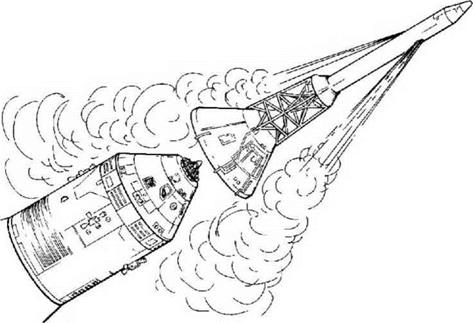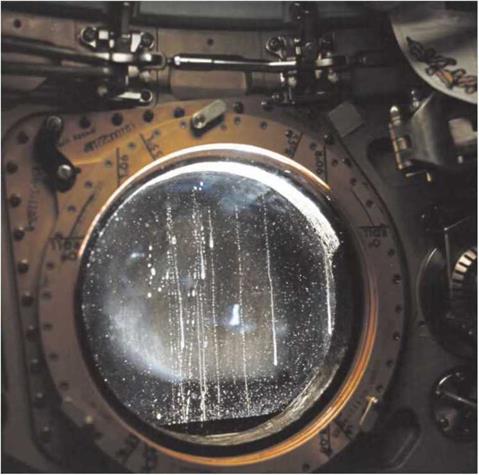Tower jettison
On Apollo, it was usual to cut, eject or actuate parts of the vehicle using carefully arranged explosives that ranged from small squibs that operated helium valves on the lunar module, to the two great rings of explosive bridge wire that ran around the interstage. These were powerful enough to cut the vehicle in two. Notwithstanding
the fact that the Saturn contained enough propellant to simulate the bang of a small nuclear device, its structure was festooned with explosives, including the propellant tanks themselves. Enormous strips of shaped charges had been placed along the sides of the tanks to rip them open in case of an abort while in the atmosphere. This would enable the propellants to disperse before the vehicle impacted the ground. The only time the crews were able to see one of these charges in operation was when the LET and the boost protective cover (BPC) that surrounded the command module were jettisoned. Four explosive bolts that held the base of the tower to the top of the CM were detonated to free both it and the BPC that was attached to it. A small solid – rocket motor near the top of the LET was enough to pull them away from the already accelerating spacecraft. For the first time, the crew could see through all five windows, rather than one or two portholes built into the BPC. Ed Mitchell described what he saw out of his windows at the Apollo 14 post-flight debrief. "When the escape tower and the BPC jettisoned, there was quite a bit of noise and flash associated with it, and quite a bit of debris that came off.” Mitchell was probably witnessing the detonation of the bolts that held the tower to the CM. "It was louder and more dramatic than I expected,” he added. His commander Alan Shepard reinforced the observation: "There wasn’t any question about the fact that it went.” "It’s like all the pyro functions,” added Stu Roosa. "You know they happen.” John Young took two rides on the Saturn V to appreciate the spectacle; first in the centre seat on Apollo 10, then in the left seat on Apollo 16. "You can see the whole works go off. I didn’t see it on Apollo 10, but I sure saw it this time.”
|
Drawing of the moment of jettison of the launch escape system. (NASA) |
|
Streaks run across the hatch window of the Apollo 12 command module. (NASA) |
When Apollo 12 had launched after a rain shower, Pete Conrad, who was still trying to take in the repercussions of their lightning strike, noted how the boost protective cover had failed to be as watertight as expected. "The tower and BPC went as advertised; but when they did they unloaded a whole pile of water on the spacecraft again, and this water streaked down the windows and froze immediately. At the same time, the water picked up particles from the LET jettison motor and deposited a white ash in the form of oil droplets and streaks all over the windows. The ice sublimated later, en route to the Moon, but it left white deposits in the form of spiderweb-like things in the corner crevices and as a white deposit on the windows.”












